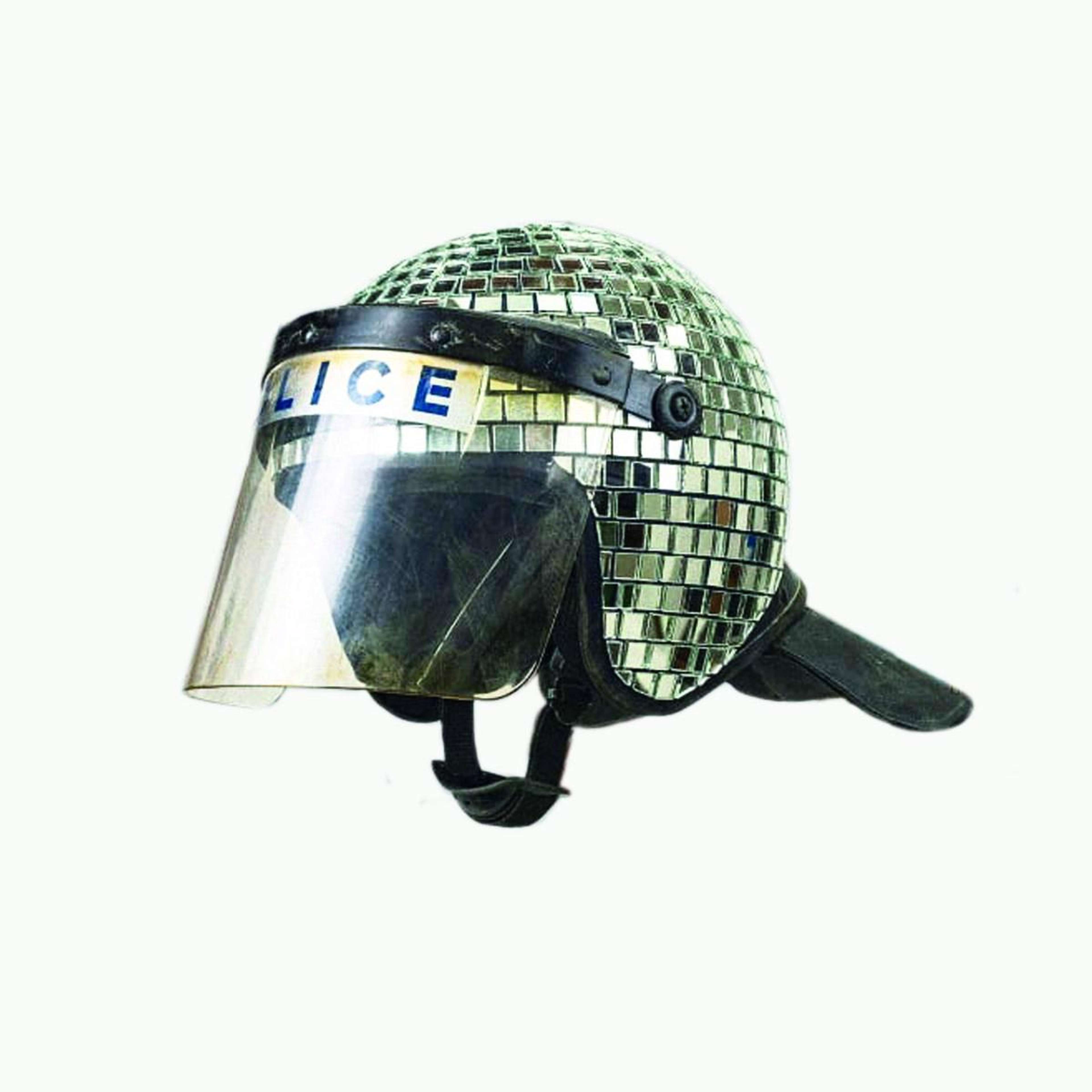
Banksy™ Met ball

Banksy™ Met ball
Mixed Media
Banksy
Price data unavailable
There aren't enough data points on this work for a comprehensive result. Please speak to a specialist by making an enquiry.
Mixed Media
Auction Results

Track auction value trend
Meaning & Analysis
Banksy's Banksy™ Met ball is a humorous home lighting system crafted from a police helmet and 650 mirrors. It's part of his Gross Domestic Product collection, displaying his dislike of the police and knack for redefining art. Through readymade, Banksy creates an amusing, approachable artwork that breaks the traditional art mold.
'This home entertainment lighting system is made from an old Police riot helmet and approximately 650 little mirrors.'- Gross Domestic Product
Signed on the inside. Encapsulating the biting wit of Banksy’s homewares brand, Gross Domestic Product, Met ball is a clever pun on that icon of authority and state control, the riot helmet, and the symbol of fun and entertainment that is the disco ball. Together they form a hybrid object cleverly named after one of the most important events on the celebrity calendar.
With this work Banksy once again pronounces his disdain for the police, specifically the London Metropolitan Police in this work, continuing a theme present in his street art since the early 90s. Policemen are featured most notably in Kissing Coppers, a mural originally sprayed on the side of a Brighton Pub to celebrate Pride; Rude Copper, which features a policemen giving the viewer the finger; and Stop And Search, in which a policeman rifles through the wicker basket of a young girl instantly recognisable as Dorothy from The Wizard of Oz.
As well as referencing earlier work this piece marks a turn towards sculptural objects for the artist, inviting comparisons with the ready-mades of the 20th century in which artists like Duchamp arranged found objects into new combinations and compositions and added their signature to elevate the everyday into high art. Banksy has always been against the concept of ‘high’ and ‘low’ art, however, and this work, with its accessible humour and relevance to people of all backgrounds and cultures shows his ability to transcend the canon of art history and rewrite the rules of the establishment.
This desire to stand apart from the art world and its machinations was perhaps most strongly reflected in the opening of Gross Domestic Product itself. Following in the footsteps of other renegades such as Keith Haring, who opened a series of Pop Shops in order to sell his own merchandise, and KAWS, whose OriginalFake was the only outlet for his limited edition toys until he began selling from his website, with GDP Banksy was attempting to gain control over sales of his work as well as his own trademark.
The shop began life as a showroom that never opened in Croydon, South London, featuring a selection of new products/artworks that would be then sold online through a kind of lottery system. The stunt attracted crowds immediately as well as a flurry of articles and comments online as it went viral after being shared on the artist’s instagram account. The 25 products sold on the shop – each limited to various editions – are now exclusive collector’s items representing an important moment in the history of the relationship between art and the internet.